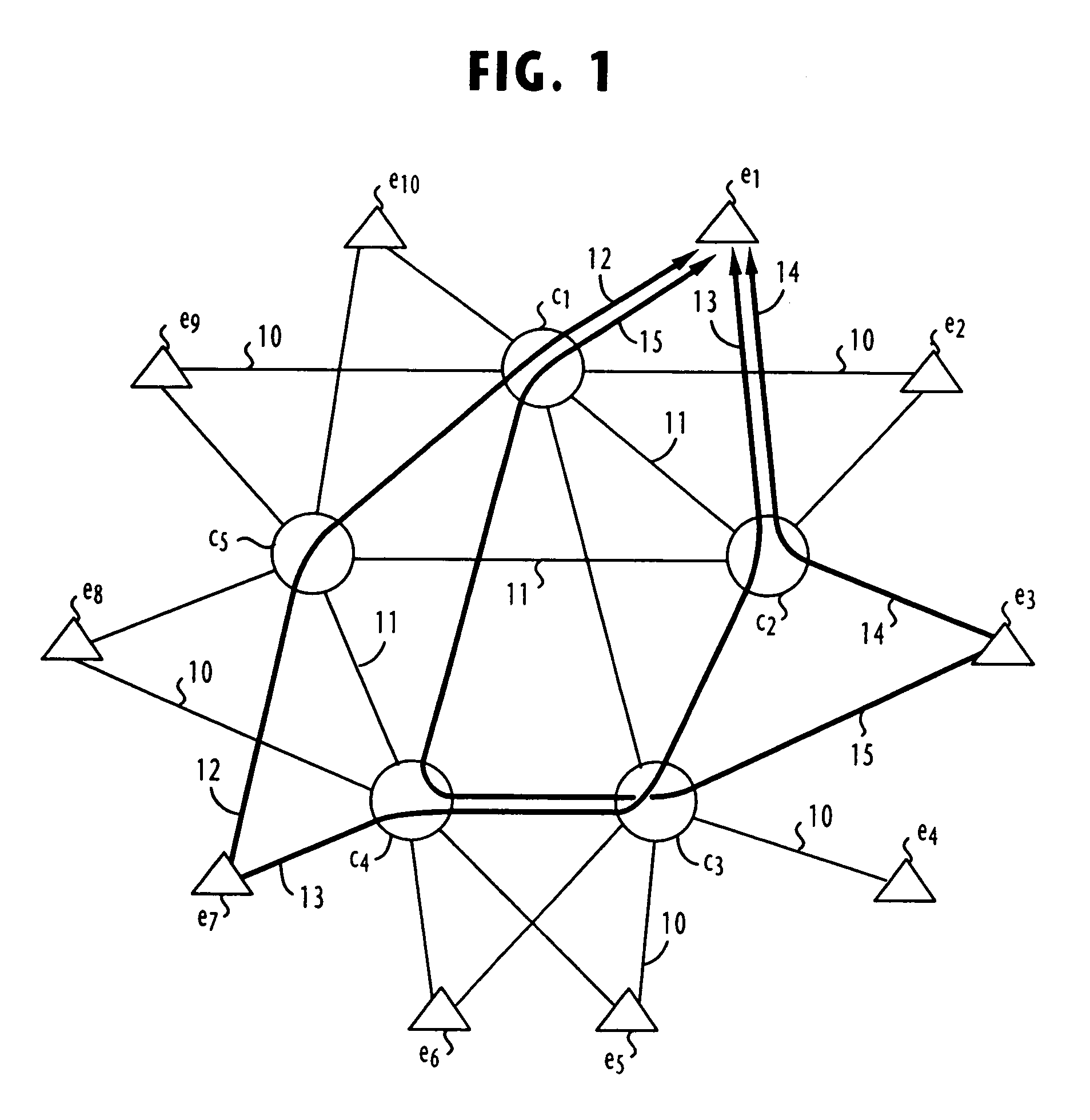Apparatus and method for designing communication paths of tree structure
- Summary
- Abstract
- Description
- Claims
- Application Information
AI Technical Summary
Benefits of technology
Problems solved by technology
Method used
Image
Examples
Embodiment Construction
[0025]FIG. 1 represents a fault tolerant communication network in a directed graph for purposes of explanation of the present invention. As illustrated, the network comprises a plurality of edge nodes e1˜e10 and a plurality of core (intermediate) nodes c1˜c5. Each edge node is called an ingress node if it receives incoming traffic from end user systems or an egress node if it delivers outgoing traffic to end user systems. Edge nodes e1 ˜e10 are connected to adjacent core nodes as indicated by thin lines 10. Each of the core nodes c1˜c5 is connected to every other core nodes as indicated by a thin line 11.
[0026]As opposed to the usual tree graph representation in which the root node is connected by directed arcs (links) to the remaining nodes, the egress node is taken as a root node in the present invention and the links are directed towards the root (egress) node, rather than towards the remaining nodes. A link from one node to any of the other nodes is denoted by an ordered pair of...
PUM
 Login to View More
Login to View More Abstract
Description
Claims
Application Information
 Login to View More
Login to View More - R&D
- Intellectual Property
- Life Sciences
- Materials
- Tech Scout
- Unparalleled Data Quality
- Higher Quality Content
- 60% Fewer Hallucinations
Browse by: Latest US Patents, China's latest patents, Technical Efficacy Thesaurus, Application Domain, Technology Topic, Popular Technical Reports.
© 2025 PatSnap. All rights reserved.Legal|Privacy policy|Modern Slavery Act Transparency Statement|Sitemap|About US| Contact US: help@patsnap.com



